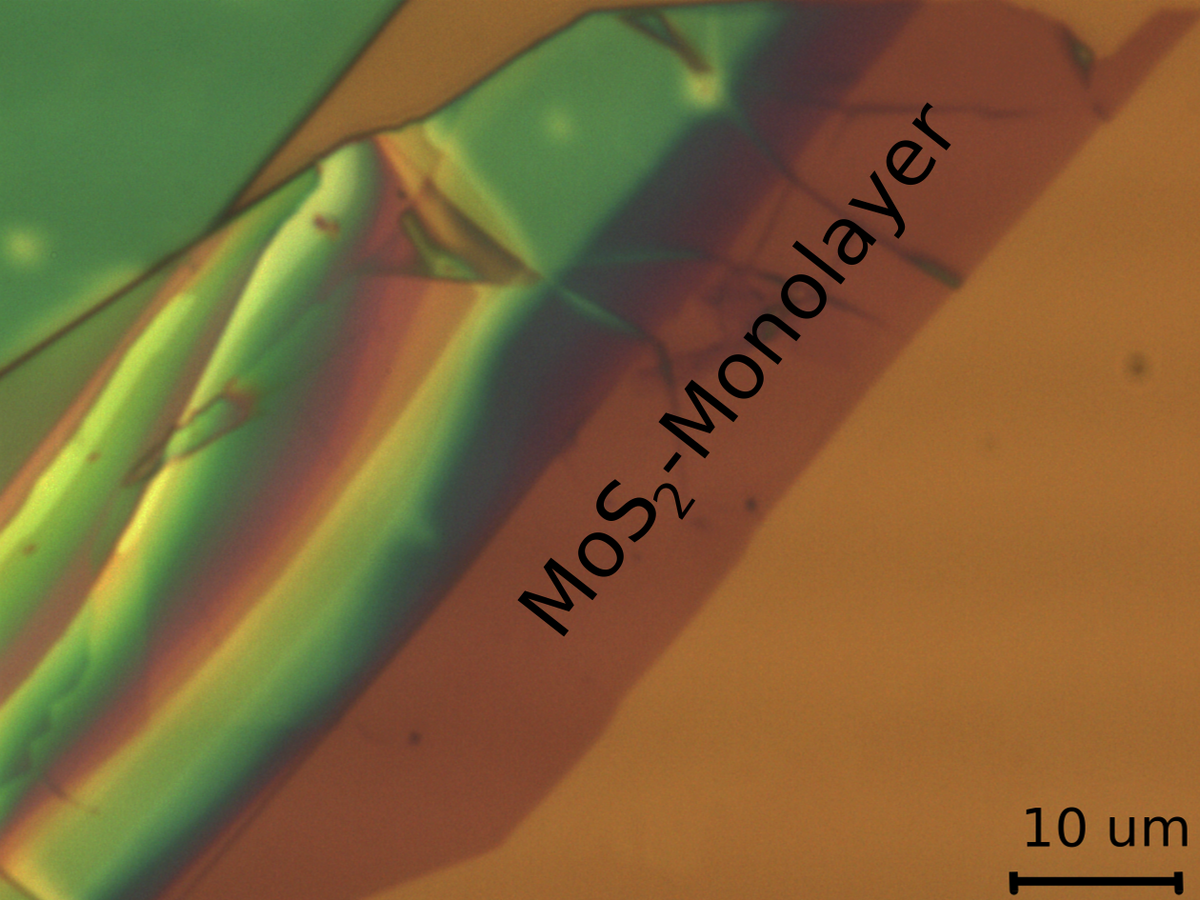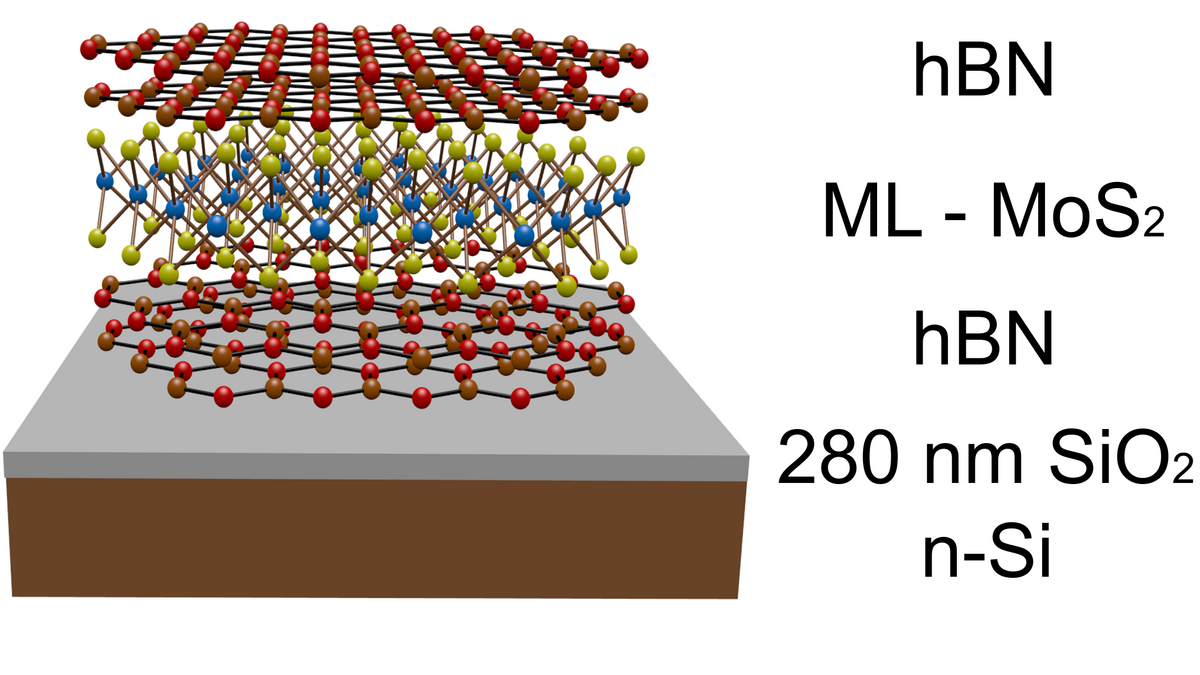Two-dimensional structures
The family of semiconducting TDMCs (transition metal dichalcogenides) is promising for fundamental analysis of two-dimensional systems with potential applications in optoelectronics and quantum technologies. Especially MoS2, MoSe2, WS2 and WSe2 are excellent candidates for photonic applications, because of their direct bandgap, which is dominant in monolayers of these materials (other layers exhibit a indirect bandgap). Because of this, monolayers exhibit a strong light-matter interaction. The two-dimensional character of these monolayers and the weak dielectric surrounding lead to a significant increase of coulomb-interaction, this favors the formation of electron-hole pairs (excitons) with high binding energy.
We are studying the physics of correlated electron-hole-states in these materials. The focus here lies on neutral, charged (so-called trions), and localized excitons. Possibilities for the control and manipulation, e.g. by intentional doping, of their energetical states are researched.
Monolayers of these materials are produced in our lab by mechanical exfoliation and transfered to different substrates to reach the desired phenomena. The structures are analyzed using optical spectroscopy (Microphotoluminescence and Ramanspectroscopy) as well as electron microscopy techniques. For this, cooperations with the working groups of prof. Rosenauer and prof. Eickhoff in the IFP exist.




![[Translate to English:]](/fileadmin/user_upload/fachbereiche/fb1/ifp/Logo/Logo_final_small.png)